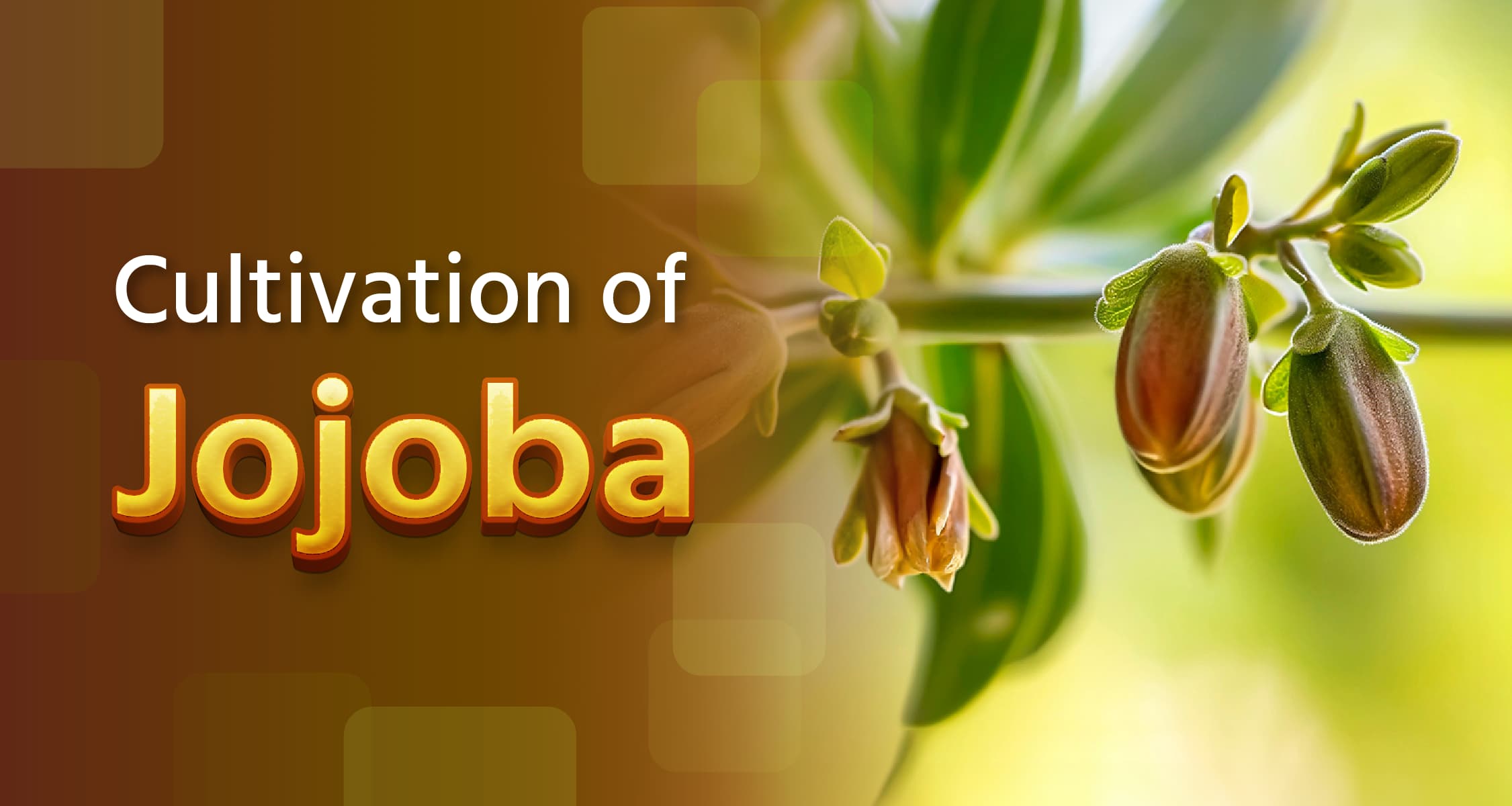Cultivation of Jojoba

Cultivation of jojoba is easy, especially in warm, dry climates and well-drained soils. It is easiest to grow in sandy soil and does not require fertilizers. Jojoba can be planted in hot regions, which is why it is called "Desert Gold." Initially, it needs irrigation, but later it requires less water. Jojoba is a desert plant mainly grown in Rajasthan, India.
How to Cultivate Jojoba?
- Climate
Jojoba plants require a warm, dry climate. For optimal growth, they need a temperature of 25-30°C. Temperatures above 35°C can damage the fruits. The fruits are sensitive to dry conditions; low humidity can cause the fruits to shrink and crack.
- Soil
Jojoba can be successfully cultivated in almost all types of soil, but loamy or sandy loam soil rich in organic matter is considered best for the plants. These plants can easily grow in well-drained sandy soil. Jojoba plants do not require any special fertilizers. Sandy, acid-free land is needed for cultivation, and the soil pH should be between 5.5 and 6.5.
- Time of Sowing
In India, jojoba seeds are sown during the monsoon season (June-July). The rainy season, from June to September, is considered the most suitable time for jojoba cultivation in India.
- Field Preparation
First, remove weeds, stones, and debris from the field. Then, perform a deep plowing about 11-12 inches deep. To increase the soil's fertility, mix well-rotted manure into the soil. Additionally, use nitrogen, phosphorus, and potassium as needed. After this, do light plowing to make the soil loose and level. Ensure proper drainage in the field.
- Planting
For Jojoba planting, seeds should be prepared in a nursery or sown directly in the field. However, Jojoba is not cultivated through seeds. Before transplanting into the main field, plants are prepared in the nursery. When the plants are about 6-8 weeks old and their height is 6-8 inches above the ground, they should be transplanted from the nursery to the main field. Thai apple berry cultivation can also be done by planting cuttings. Plant the cuttings/seedlings in rows, maintaining a distance of 6-8 meters between rows and about 4-6 meters between plants.
- Fertilizer Management
Jojoba requires a low to moderate amount of nutrients. The recommended fertilizer dosage is 50 kg of nitrogen (N), 25 kg of phosphorus (P2O5), and 25 kg of potash (K2O) per hectare per year. Additionally, organic manure can be applied at a rate of 5-10 tons per hectare. Organic manure provides essential nutrients to the plant roots and improves soil quality.
- Irrigation Management
Proper irrigation management is crucial for Jojoba. Regular irrigation is necessary for the first two years, while later, the plants can rely on rainfall. Increase irrigation during summer and reduce it during the rainy season. Light irrigation should be done immediately after transplanting, and more water should be provided during dry weather. The frequency of irrigation depends on soil, climate, and the age of the plants. The water should be free from salts and contaminants. Proper irrigation ensures healthy plant growth and better yield.
- Weed Management
Weed problems in the orchard can reduce fruit yield and quality, and can also lead to the growth of pests and diseases. Hand weeding and hoeing are done to control weeds. Small agricultural tools like hoes and spades can be used for weeding. Mulch the soil surface around the plants with straw, leaves, or grass. Additionally, plastic sheets available in the market can also be used for mulching.
- Diseases and Pests
Jojoba is relatively free from pests and diseases, but some common pests can still affect it. The main pests include aphids, spider mites, and whiteflies. Aphids are small insects that weaken plants by sucking their sap. Spider mites are tiny pests that damage plant leaves, hindering their growth. Whiteflies also weaken plants by sucking their sap. Regular inspection and proper management measures are essential to control these pest infestations.
- Harvesting
Carefully harvest jojoba fruits by gently twisting them by hand. The harvesting tools depend on the type of fruit and the height of the plant. Sort and classify the fruits based on their size, color, and quality.
- Storage
After harvesting, store the fruits in a cool, dry place. Some fruits may require specific storage conditions, such as low temperature or high humidity.
- Yield
Each jojoba plant produces fruit for about 20 years. Initially, the yield is 5-10 kilograms of fruit per year, which can later increase to 20-30 kilograms.
Benefits of Jojoba
- Jojoba oil is odorless and of high quality.
- It has a very low moisture content, making it a top choice for cosmetic companies.
- The chemical composition of jojoba oil is similar to sebum, the oily substance produced by human skin.
- Jojoba oil can be used daily on hair and skin.
- This oil acts as a remedy for hair and skin.
- Jojoba has a high boiling point, resulting in more energy and less sulfur when burned as fuel.
Do you cultivate Jojoba? If yes, let us know in the comments. For more such interesting and important information, follow the 'Horticulture' channel now. If you liked this post, like it and share it with your fellow farmers.
Frequently Asked Questions (FAQs)
Q: What is Jojoba called in India?
A: In India, Jojoba is commonly known as "Jojoba." However, it is not a native plant of India and is primarily grown in the arid regions of Rajasthan, Gujarat, and Haryana.
Q: Where is the Jojoba plant found?
A: In India, Jojoba is mainly grown in the arid regions of Rajasthan, Gujarat, and Haryana.
Q: When should Jojoba be planted?
A: In India, the monsoon season (June-July) is considered the most suitable time for sowing Jojoba seeds.
जारी रखने के लिए कृपया लॉगिन करें

फसल चिकित्सक से मुफ़्त सलाह पाएँ
